Land Travel - Melaka

Gryphon II
Chris and Lorraine Marchant
Wed 3 Apr 2013 04:29
|
After a night back on board following our visit to the highlands, we
travelled to Malacca or Melaka as it is known here. Originally founded by a
Hindu Indian from Sumatra, the city is fascinating as it is one of the first 3
Straights settlements together with Singapore and Penang. Rich in history and
very multi-cultural it has had various influences including the Portuguese,
Dutch and British colonial powers but well before them the Sultanate of Melaka
flourished with a major role in essential trade as the biggest Malaysian port
and being influenced by the Chinese, Indonesians and the nomadic sea faring
Bugis from south Sulawesi. During the colonial period the city also gained a
sizeable Indian population consequently it is a wonderful and vibrant cultural
hotch potch.
Most noticeable is the Dutch influenced architecture of the town centre.
The narrow river which was once a busy port is lined with houses; it could
almost be a canal in Amsterdam but is rather more colourful.
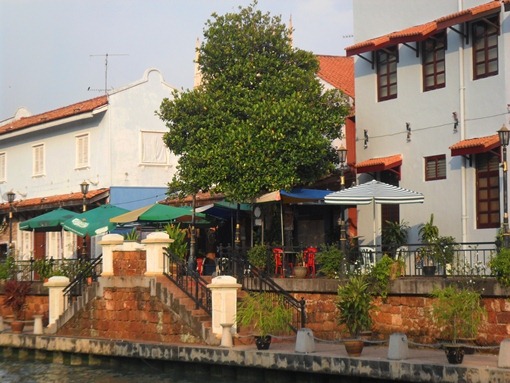 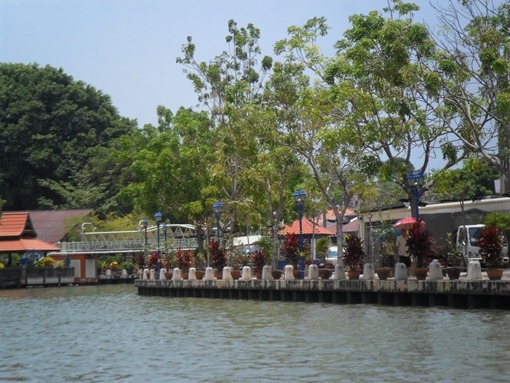 Having, unfortunately, checked into a decidedly sub-standard (not to say
dirty) hotel we spent 2 days exploring the city. Our first stop was at what had
been an old shop house in the Chinese quarter where we were shown round by a
guide who spoke perfect English. The houses could be opened to the road at the
front with often horizontally hinged shutters, with the living quarters, kitchen
and well at the back, and surprisingly large rooms above for sleeping and
storage. This had been lovingly restored with original building materials: tiny
bricks and lime plaster as well as original slates on the roof which was
designed to ventilate the building.
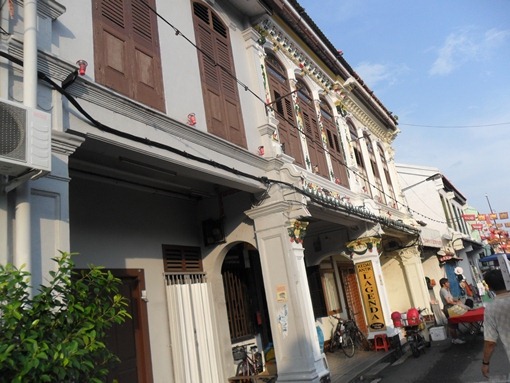 Along the same road as this workaday shop house was a much grander
residence of one of the wealthy Baba Nonya families. These are the descendants
of Chinese immigrants from hundreds of years ago who settled here and married
Malay or sometimes Indonesian girls. Their culture evolved its own distinct
characteristics of dress, customs and food. The house we visited, which is still
owned by the same family, was almost palatial with separate public and private
rooms separated with ornate shutters and fitted out expensively with local,
Chinese and even European furniture, tableware, silver and glass ware,
tapestries, silks and linens etc. We were shown around by a knowledgeable and
amusing local Chinese woman who spoke perfect English.
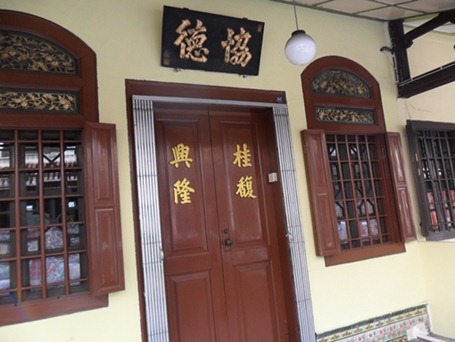 Still in the same street we stumbled upon another large house, which proved
to be the most fascinating of all. At first glance it appeared to be a
restaurant specialising in bird’s nest soup…but it turned out to be a working
museum devoted to the birds’ nest industry. The story was that the rather grand
building had been left in a dilapidated state and whilst in this condition had
been taken over by the swiftlets that produce the birds’ nests. They flew in via
the opening from ground floor to roof which rises through the centre of all
these house to provide ventilation. An enterprising local bought the house and
encouraged the switlets to stay. This is an enormous house, the second largest
in Melaka and apart from the rooms where the birds nest, it has been adapted for
the birds’ nest business. Now tourists can see the swiftlets building their cup
shaped nests in the joists followed by an exhibition of the industry process
including a workshop where girls in overalls and surgical masks carefully clean
the nests with tweezers to remove all impurities. The work is slow and
painstaking, about an hour per tiny nest, but the value of the end product is
such that it is very profitable. Eating these birds’ nests is thought to be good
for the skin in particular due to the high levels of collagen they contain. The
good news is that the extract from the nests can be used in all sorts of ways…we
had a birds’ nest mango pudding which was delicious. The building itself has
been beautifully restored and gives a good idea just how wealthy this
place once was.
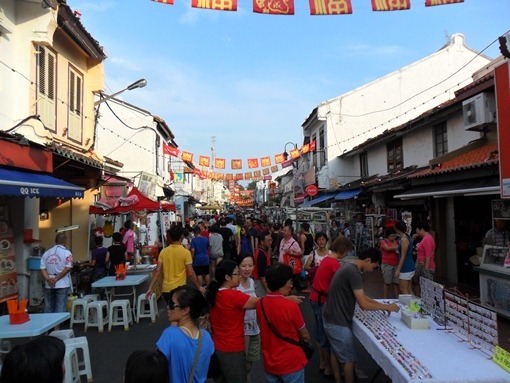 It was the weekend and in the evening the whole of the main street was
taken over with stalls selling everything from local delicacies to sun shades
for your car. A multi-cultural crowd of locals, Malay tourists and foreigners
from all over the world thronged the narrow street. The stall holders were
like market traders everywhere a sociable bunch happy to show you their wares
and share a joke even if you were not buying. The centre of Melaka is dominated
by the river and we duly took a ferry ride through the town. There is no port
any longer, silting of the river and the increasing size of ships were the
downfall of trade long before the 20th century. Attractive to look at the river
is not clean and we tried to keep ourselves well away from the dubious splashes
that the barge like boat took on board when we hit the wake of another
vessel.
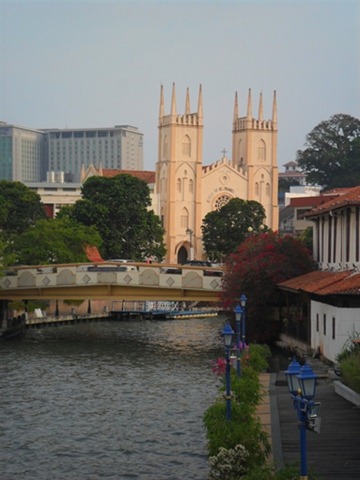 There are few remains from the Portuguese occupation of Melaka as much of
the original fortifications were torn down by the British on one occasion when
they had had to give the city back to the Dutch. This gate and some evocative
grave stones were all that remains.
 It seems almost unbelievable that these European settlers came in their
flimsy sailing craft braving the climate and its attendant diseases and then set
about trading with the local people of a totally different culture, language and
outlook, and all for a few, admittedly very valuable, spices.
 Many of the gravestones, which date back to the 17th century, were of
people who died young, but equally there were a surprising number who lived to a
reasonable age for the time. Admittedly the gravestones were of the highest
ranking people with the best diet and housing, so the majority of the early
pioneers must have had short lives far from home.
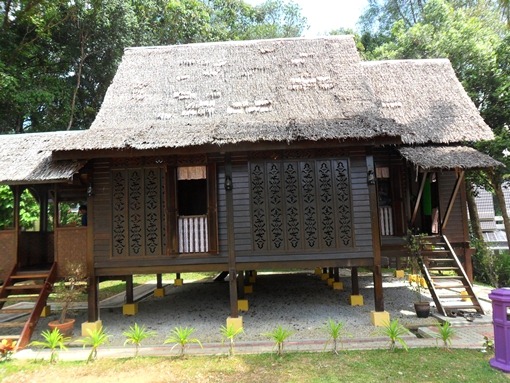 On our return to Port Dickson we stopped at a cultural park on the
outskirts of Melaka which had examples of traditional houses from each of the
Malaysian states. Although each region had differences in the layout of the
rooms or the style of their ornamentation, they all have some things in common.
They are all raised off the ground to deter snakes, insects and vermin and
to be above any floodwater in the torrential rainy season. They all have
verandahs at the front as a sociable place to sit and watch the world go by.
These houses are large and airy, they mostly have plenty of windows to open to
the breeze with no glass but shutters for night time use and fretwork or pierced
carved panels in the walls which create cooling air currents. They have steeply
pitched roofs that allow rain to run off quickly but also give some height to
encourage a draft upward through the building. In summary they all seemed
well adapted to the environment and built using local wood and woven palm. Sadly
today many of the traditional buildings are becoming derelict as they are
replaced by concrete bungalows with tin roofs and power hungry air con.
Progress.
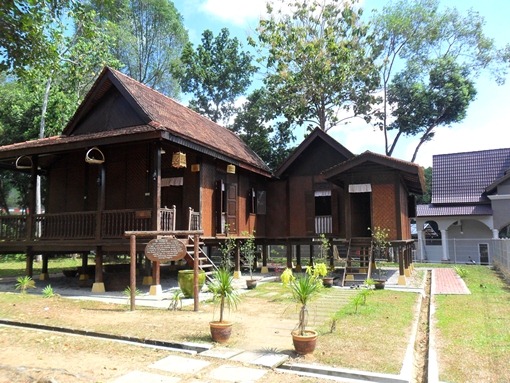 Melaka is a fascinating city and we hope to visit again one day. One of the
great highlights is the food. Because of the wealth of influences there is
something for every taste from traditional Baba Nonya dishes to Indian ,
Chinese, Malay and even to …Kentucky Fried Chicken if you so wish. Our favourite
bar was appropriately named “The Geographer’s”, which served excellent beer with
some good canned music and some less good live music performed by man with
a synthesizer who wanted to be Kris Kristofferson… but at least no
karaoke!
|